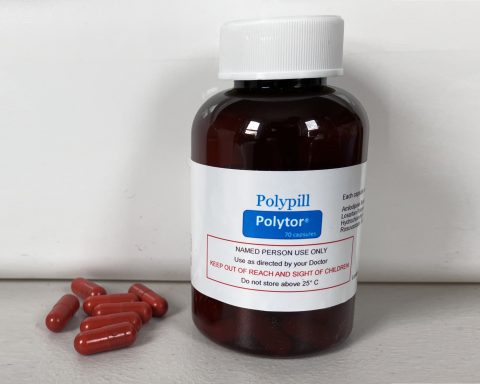
Housing is considered a social determinant of stable, good health. Damp and mould in houses have the potential to exacerbate conditions such as asthma and allergies.1 Severe cases can even be associated with mortality. In both primary and secondary care, we see firsthand the concerning, growing impact of mould on the health and wellbeing of our patients. Research conducted by The Health Foundation suggests there is an established link between poor housing and poor health experienced by those living in non-decent homes.2
Within a period of 2 months, while working across primary and secondary care sectors in North West London, I have seen patient cases from houses with severe mould or damp. These patients frequently present with worsening asthma to the extent of life-threatening attacks requiring PICU admission, and others may have ongoing allergies impacting their daily living.
“… we as healthcare providers are faced with limited options”
These cases are a stark reminder of how significantly more needs to be done to combat the devastating impact of mould affecting both children and adults. A common denominator in these cases appears to be social rented homes with damp or mould, with symptoms often subsiding when the patients are away at school or at work and worsening in their homes.
A case control study found that the severity of damp in participant’s homes correlated with the extent of airflow obstruction in asthmatic participants.3 Another study, focusing on an older population in Cornwall, found that older adults, in particular females, may be at an increased risk of asthma in social housing with mould.4
We discuss these cases in our multidisciplinary teams within the hospital and the GP setting, highlighting the root cause to likely be the damp and mould in patient’s homes. In most cases brought to our attention, we work with families through provision of letters for their landlord and help to point them in the direction of local councils. In some GP settings, locality dependent, we are fortunate to have social prescribing link workers who are assigned to the practice and can assist patients in navigating the resources available to raise concerns with their landlord.
Campaigns such as ‘Make Things Right’ provide toolkits and strive to support our patients in challenging their landlords.5 However, several months down the line, these patients are either remaining on the waiting list for better, alternative accommodation or their landlords have failed to resolve the issue within the property.
“In the meantime, we can empower patients with the tools and legislation on how to challenge their landlords … “
In the interim, we as healthcare providers are faced with limited options but to escalate clinical management and wait alongside them in the hope they will find more suitable accommodation soon. Despite our best medical efforts to treat these patients, they continue to present in poor health for a cause that is reversible. As Michael Marmot said, ‘What good does it do to treat people and send them back to the conditions that made them sick?’6
The Social Regulation Bill has been amended earlier this year with the addition of Awaab’s Law after the tragic case of a 2-year-old boy’s death secondary to extensive mould. It hopes to later this year provide a timeframe by which landlords are legally required to have resolved damp and mould when requested by tenants.7 In the meantime, we can empower patients with the tools and legislation on how to challenge their landlords through the support of the Housing Ombudsman Service to demand better housing and therefore better health.
A wider discussion across integrated care boards that brings housing to the forefront, engagement and data from local communities, and discussions with housing organisations and local councils will bolster our patients. These steps will work towards ensuring landlords are more regulated on the living conditions they provide for their tenants in order to conform to safe, liveable standards.
References
1. Fisk WJ, Lei-Gomez Q, Mendell MJ. Meta-analyses of the associations of respiratory health effects with dampness and mold in homes. Indoor Air 2007; 17(4): 284–296.
2. The Health Foundation. Relationship between health and home quality. 2021. https://www.health.org.uk/evidence-hub/housing/housing-quality/relationship-between-health-home-quality (accessed 27 Jun 2023).
3. Williamson IJ, Martin CJ, McGill G, et al. Damp housing and asthma: a case-control study. Thorax 1997; 52(3): 229–234.
4. Moses L, Morrissey K, Sharpe RA, Taylor T. Exposure to indoor mouldy odour increases the risk of asthma in older adults living in social housing. Int J Environ Res Public Health 2019; 16(14): 2600.
5. Department for Levelling Up, Housing and Communities. Make Things Right campaign toolkits. 2023. https://www.gov.uk/government/collections/make-things-right-campaign-toolkits (accessed 27 Jun 2023).
6. The King’s Fund. Michael Marmot: prioritising and developing further action on reducing the social gradient in health. 2017. https://www.kingsfund.org.uk/audio-video/michael-marmot-reducing-social-gradient-health (accessed 27 Jun 2023).
7. Department for Levelling Up, Housing and Communities, Gove M. Government to deliver Awaab’s Law. 2023. https://www.gov.uk/government/news/government-to-deliver-awaabs-law (accessed 27 Jun 2023).








